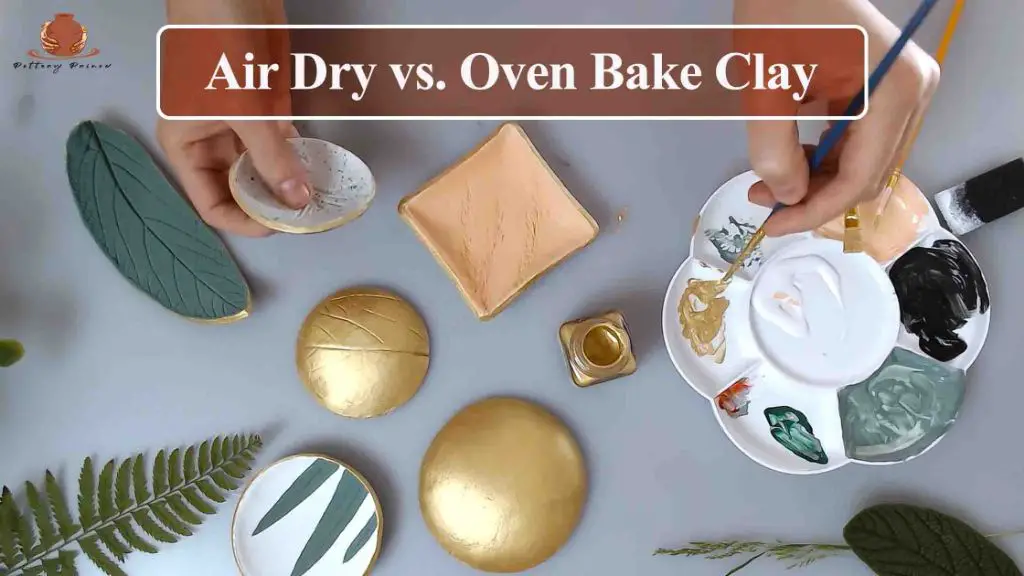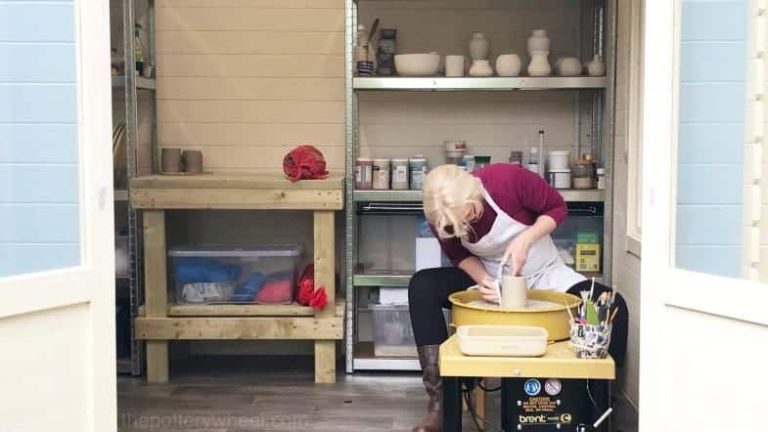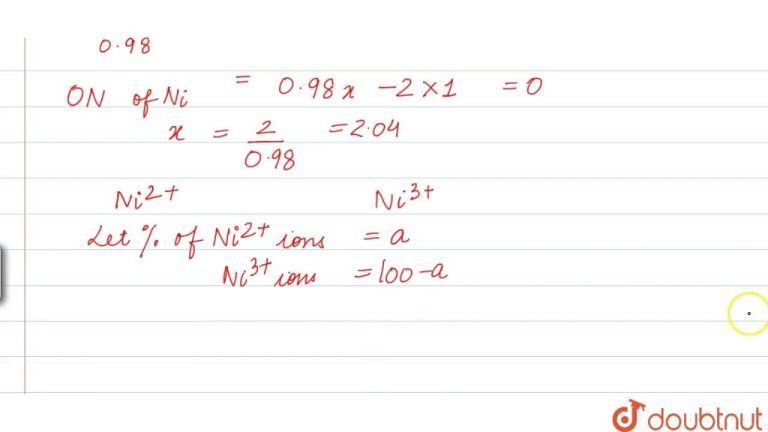What Happens If You Bake Air Dry Clay?
What is Air Dry Clay?
Air dry clay is a modeling material made of clay that cures and hardens at room temperature. Unlike traditional clays that need to be fired in a kiln, air dry clay simply requires air exposure to dry and harden (https://2wardspolymerclay.com.au/whats-main-difference-air-dry-clay-and-polymer-clay/). This makes air dry clay convenient to work with and very accessible for hobbyists and crafters.
The main differences between air dry clay and polymer clay are that air dry clay is water-based and polymer clay is oil-based. Air dry clay is also porous when dry while polymer clay cures solid and smooth. In terms of composition, air dry clay typically contains cellulose fibers or materials like gum or glue to help it dry without cracking (https://www.thesprucecrafts.com/air-dry-clay-2905844).
Some of the most popular brands of air dry clay are Crayola Model Magic, Activa Air-Dry Clay, Hearty Clay, and Makins Professional Ultimate Air Dry Clay. These clays come in white and terracotta shades and some even have sparkles or color mixes. The clay can be purchased in bulk or in small starter packs from most craft stores.
Why Bake Air Dry Clay?
There are several benefits to baking air dry clay in the oven:
Baking speeds up the drying time significantly compared to air drying. Air dry clay can take 24-48 hours to fully cure, whereas baking for 30 minutes is often sufficient (Source). This allows projects to be completed much more quickly.
The heat from baking also strengthens the clay by fully hardening it. This reduces the chances of cracking or breakage once dry (Source). Baked clay pieces tend to be more durable and long-lasting.
Furthermore, baking minimizes the cracking that can occur as moisture evaporates during air drying. The rapid drying in the oven helps the clay harden uniformly.
What Temperature to Bake?
When baking air dry clay, it’s important to use the proper temperature range. Typically, air dry clay should be baked between 130°F – 275°F according to experts (https://www.susiebenes.com/blogs/airdryclayart/a-method-to-the-madness-drying-air-dry-clay-effectively). Higher temperatures above 275°F can burn or scorch the clay. Most recommendations fall between 130°F – 200°F as the ideal baking temperature.
Temperatures on the lower end between 130°F – 200°F allow the clay to dry slowly and evenly throughout. Going above 200°F risks drying the outside at a faster rate than the inside, which could lead to cracking. It’s best to stay on the low end, around 130°F – 175°F for most standard air dry clays.
Baking Time Recommendations
An important factor to consider when baking air dry clay is the baking time. The baking time will vary based on the size and thickness of the clay sculpture. According to this article, for a small 5 inch sculpture, baking for around 15 minutes will usually be sufficient. However, larger sculptures will require more time, ranging from 30 minutes up to 2 hours or more.

As a general guideline, air dry clay sculptures need about 15 minutes of baking time per 1/4 inch (6mm) of thickness. So a 1/2 inch thick piece will need 30 minutes, a 1 inch piece will need an hour, etc. If working with thicker pieces over 1/4 inch, it’s recommended to bake in intervals to prevent cracking, letting the clay cool slightly between sessions.
Be sure to keep a close eye on the clay while it bakes, as going over the recommended time can cause discoloration or scorching. It’s always best to start with less time and add more if needed. Refer to the manufacturer’s instructions for specific baking times.
Baking Instructions
To bake air dry clay projects, preheat your oven to the desired temperature, which is typically between 110-130°F. Place your clay sculpture on a cookie sheet or baking tray before putting it in the oven. You can also use a toaster oven, food dehydrator, or makeshift “box oven” to bake air dry clay[1].
Check on the clay every 15-20 minutes while baking. Air dry clay can bake fully in 1-3 hours depending on thickness and size. Tap the sculpture gently to check for hardness – when it sounds hollow, it is likely finished baking. Let the baked clay cool completely before handling.
What Happens When Baked?
When air dry clay is baked in the oven, some key changes occur:
The clay hardens and becomes more durable. The baking process helps fully cure and harden the clay, making finished pieces less prone to dents, scratches or other damage. According to Susie Benes, baking can make air dry clay up to 40% harder.
The color may darken slightly. Some types of air dry clay can undergo a subtle darkening in shade when baked. The clay still retains the same basic color, but becomes somewhat richer and more saturated from the baking process.
It may still require sealing afterwards. Even once baked, air dry clay is still porous and prone to staining, so many artists recommend sealing pieces after baking for protection. A water-based sealer like polyurethane can be used to seal air dry clay after baking.
Tips for Successful Baking
When baking air dry clay, it is important to bake the clay evenly to prevent cracking. According to this source, baking time depends on the size and thickness of your sculpture. For small sculptures, bake at a low temperature (225°F) for 15-20 minutes. For larger sculptures, bake longer, up to an hour. Rotate pans periodically for even baking.
Allow air dry clay sculptures to cool fully before handling to prevent cracking, according to this article. Let cool for 30-60 minutes after removing from the oven. The clay continues to harden as it cools.
Baking air dry clay on a baking clay liner or parchment paper can prevent sticking and allows for easy transfer out of the oven, according to clay artists. Avoid baking directly on metal pans.
Things to Avoid
When baking air dry clay, there are some common mistakes to avoid:
Baking too long or at too high of a temperature can cause the clay to crack or become brittle. According to this source, air dry clay should be baked at a low temperature like 225°F for 1-2 hours. Higher temperatures or longer baking times tend to dry out the clay too much.
Uneven baking can also lead to cracking or weak spots in the clay. Make sure to rotate pieces periodically while baking so they harden evenly. Placing multiple pieces close together can prevent air flow and cause uneven baking.
Letting air dry clay cool down inside a hot oven leads to rapid cooling and contraction of the clay, resulting in cracks. According to advice on this forum, baked clay should be removed from the oven and allowed to cool down gradually to room temperature.
Project Ideas
Air dry clay is extremely versatile and can be used to create a wide variety of crafts and decorative pieces. Some of the most popular project ideas include:
Jewelry – Air dry clay is perfect for making jewelry like pendants, beads, charms and earrings. It can be molded, shaped and textured in endless ways. Pieces can be painted or glazed after drying for more decorative options. Refer to this Pinterest board for inspiration.
Ornaments – Lightweight ornaments are easy to make with air dry clay. Simply shape balls or fun forms like animals or shapes. Add details with tools or pasta for texture. Glitter, paint and embellishments can be added after drying. Get ideas from this article on air dry clay crafts.
Figurines – Mold and sculpt miniature figurines out of air dry clay for unique decorative accents. Sculpting takes practice, but is very achievable. Let figures dry fully before painting. Refer to tutorial videos for shaping tips and inspiration.
Nearly any craft can be enhanced with air dry clay elements. The lightweight, moldable clay allows endless creativity for DIY projects. Paints, glazes and embellishments can further customize pieces after drying.
Frequently Asked Questions
Here are some common questions about baking air dry clay:
Does air dry clay shrink when baked?
Yes, air dry clay will shrink slightly when baked, usually around 10-15%. This is because the water evaporates out during the baking process. To account for shrinkage, make pieces slightly larger before baking.[1]
Can you reuse baked air dry clay?
No, once air dry clay is baked it cannot be reconstituted or reused. The chemical reaction that occurs during baking permanently hardens the clay.[2]
Does baking make air dry clay stronger?
Yes, baking will make sculptures stronger and more durable. It hardens and sets the clay. Pieces become water-resistant.[1]
Can air dry clay be baked in a regular kitchen oven?
Yes, air dry clay can be safely baked in a standard kitchen oven at low temperatures (110°F – 275°F). Do not exceed 275°F as clay may scorch or burn.[2]
How long does air dry clay need to bake?
Most air dry clays take 1-3 hours to fully bake. Thinner pieces may bake faster. Bake until hard and completely dry.[1]



